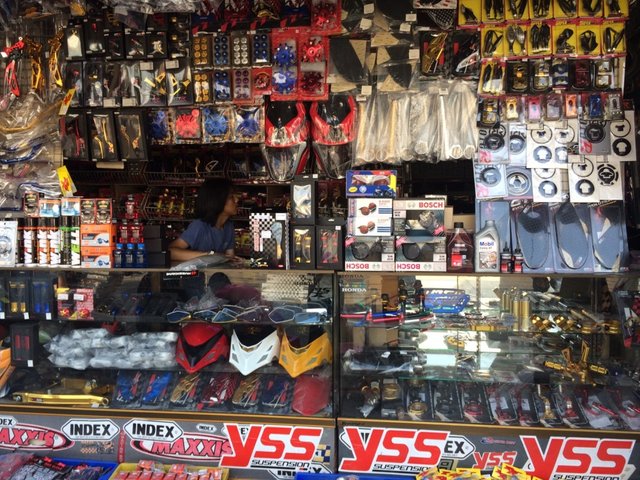Understanding the Vital Parts of a Motorcycle: A Comprehensive Guide for Enthusiasts
For bike lovers looking to boost their riding experience and guarantee their bikes run efficiently, understanding the important components of a motorbike is vital. Each component, from the engine's detailed workings to the essential function of the stopping systems, not just influences performance yet likewise safety and comfort.
Engine Components

The camshaft plays a critical function in regulating the timing of the engine's shutoffs, ensuring the exact opening and closing required for efficient fuel and air intake, as well as exhaust expulsion. This timing is crucial to maintaining optimal engine efficiency and efficiency. Additionally, the carburetor or gas injection system, relying on the motorcycle model, is accountable for blending air with fuel in the right ratio for burning.
The cooling system, either air or liquid-based, works to maintain the engine's temperature within operational limits, protecting against getting too hot and guaranteeing durability - mx parts nz. Each part, carefully developed and integrated, adds to the seamless procedure of the engine, specifying the bike's power outcome and general efficiency
Transmission System
Important to the motorcycle's performance, the transmission system ensures reliable power transfer from the engine to the wheels. This system makes up numerous important components, including the clutch, gearbox, and final drive, each playing an essential duty in converting the engine's power right into movement. The clutch, generally operated by a hand lever, serves to engage and disengage the engine from the transmission, allowing for smooth gear adjustments and regulated velocity.
The transmission, usually described as the transmission correct, includes a set of equipments that riders can manually change via to readjust the bike's rate and torque result. These equipments are organized in a series that enables the motorbike to accelerate smoothly and keep ideal engine efficiency throughout various rates. Most motorbikes utilize a sequential transmission, requiring the biker to shift gears in an established order.
Braking Devices
While comprehending the transmission system is crucial to using a motorbike's power, just as vital is the ability to regulate and stop that power properly, which is where braking systems enter into play. Brakes are crucial for safety and performance, offering the rider with the required control to browse different terrains and conditions. Usually, motorbikes feature 2 sorts of braking systems: disc brakes and drum brakes.
Disc brakes are a lot more common in modern motorcycles due to their premium performance. They include a brake disc, caliper, and pads. When activated, the caliper squeezes the brake pads against the spinning disc, transforming kinetic power right into warmth, therefore slowing down the wheel. This system provides better warm dissipation, regular performance, and boosted quiting power, specifically in wet conditions.
On the other hand, drum brakes, though less common, are still located in some motorcycles. They work by pushing brake shoes versus the internal surface area of a drum affixed to the wheel. While generally much less effective in warmth dissipation and stopping power, drum brakes are simpler and much more cost-effective.
Comprehending these stopping systems' subtleties permits bikers to preserve their bikes correctly and appreciate the engineering that makes certain reliable and risk-free quiting.
Suspension and Steering
Suspension and guiding systems are vital components that significantly influence a motorcycle's handling and trip convenience. The shock absorber, containing forks at the front and shock absorbers at the back, takes in road abnormalities, improving stability and control. motorcycle riding jacket Front forks, inverted or generally telescopic, compress and rebound to minimize impacts, while back shock absorbers keep tire call with the road, essential for grip and safety and security.
Guiding, focused around the handlebars, connects the motorcyclist to the motorcycle's directional control. The steering head bearings ensure smooth procedure, enabling specific maneuverability. Appropriate positioning and maintenance of these bearings are critical for foreseeable steering action and decreasing rider tiredness.
The suspension's adjustability is an additional vital element; preload, damping, and rebound settings permit modification to suit numerous riding designs and conditions. This adaptability is vital for maximizing efficiency, whether navigating city streets or tackling tough routes. Developments like digital suspension systems supply real-time adjustments, improving ride quality throughout Web Site varied surfaces.

Electrical Solutions
After ensuring a smooth and controlled trip with efficient suspension and steering systems, focus transforms to the electrical systems, an essential facet of modern-day motorbikes. These systems play an important duty not just in starting the engine yet likewise in powering numerous elements that enhance the performance and security of the bike.
At the heart of a motorcycle's electric system is the battery, which shops electrical power necessary for beginning the engine and powering supporting systems - mx gear nz. The alternator or generator, combined with the rectifier-regulator, makes certain the battery continues to be charged while the bike is in operation, transforming power right into electric power and keeping voltage levels
The ignition system, one more essential part, is in charge of stiring up the air-fuel mixture in the engine's cylinders. Modern bikes commonly make use of an electronic ignition system, supplying higher performance and dependability compared to typical systems.
Lighting systems, including headlights, tail lights, and signs, are also important, making certain exposure and safety for the biker. Extra electronic components such as sensors, control systems, and shows add to innovative attributes like fuel shot administration, anti-lock braking systems (ABDOMINAL MUSCLE), and digital control panels, even more enhancing the riding experience.
Conclusion
A comprehensive understanding of a motorbike's vital components, consisting of the engine, transmission system, braking devices, suspension, guiding, and electrical systems, is important for lovers aiming to enhance security, comfort, and efficiency. Mastery of these aspects enables educated decisions concerning maintenance and upgrades, inevitably enhancing the riding experience. By incorporating this expertise, bikers can guarantee their motorbikes run at peak efficiency and reliability, thus making the most of both satisfaction and longevity of their cars.
For motorbike fanatics looking to elevate their riding experience and ensure their bikes run smoothly, this website recognizing the necessary parts of a motorbike is vital.Indispensable to the motorcycle's performance, the transmission system ensures efficient power transfer from the engine to the wheels.While comprehending the transmission system is vital to utilizing a bike's power, similarly important is the capability to manage and quit that power efficiently, which is where stopping systems come right into play. Typically, motorbikes feature 2 kinds of stopping systems: disc brakes and drum brakes.
A comprehensive understanding of a motorbike's necessary parts, including the engine, transmission system, braking mechanisms, suspension, steering, and electric systems, is indispensable for enthusiasts intending to maximize efficiency, safety and security, and convenience.
 Kenan Thompson Then & Now!
Kenan Thompson Then & Now! Danielle Fishel Then & Now!
Danielle Fishel Then & Now! James Van Der Beek Then & Now!
James Van Der Beek Then & Now! Earvin Johnson III Then & Now!
Earvin Johnson III Then & Now! Naomi Grossman Then & Now!
Naomi Grossman Then & Now!